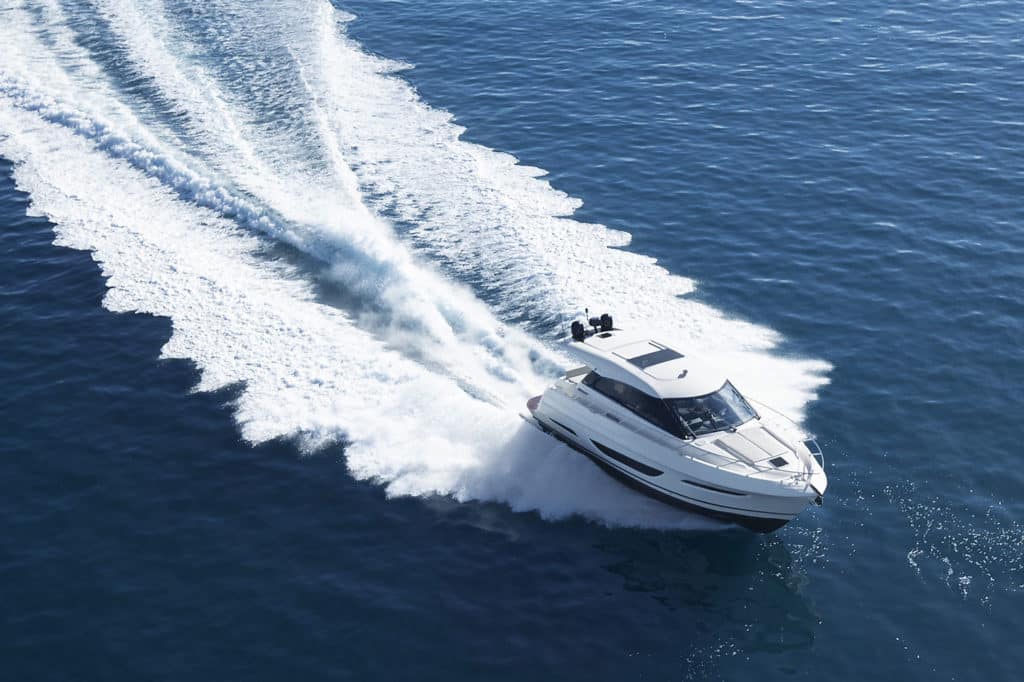
The Quays Marine Centre on Pittwater sits about 11 miles north of the central business district in Sydney, Australia—but you’d never know it. On the winter day when I boarded the Maritimo X50 at the marina, the water temperature was about 65 degrees Fahrenheit, and the air temperature matched it—though it felt warmer because the air was so dry. In fact, there was so little moisture in the air that the Pittwater region’s high bluffs and headlands, marbled with woods, appeared to be in high definition. The slightly blue leaves on the uncountable gum trees were individually visible at a few hundred yards, and the forest spilled toward the olive-green sea as if to take a swim itself. Freshwater waterfalls pattered down the rock in the bare spots, and World War II-era pillboxes stood abandoned in the woods, still holding watch for a fight that never came.
I stood mesmerized by the view—and by the fact that the cosmopolitan Sydney Opera House was calling from so close by—as our captain revved the X50’s twin 670 hp Volvo Penta D11s. Off we went at about a 28-knot cruising pace. We quickly came across a pod of fur seals lounging on a boulder and pulled up close for a look, with the captain using the Volvo joystick to maneuver us around for better angles.
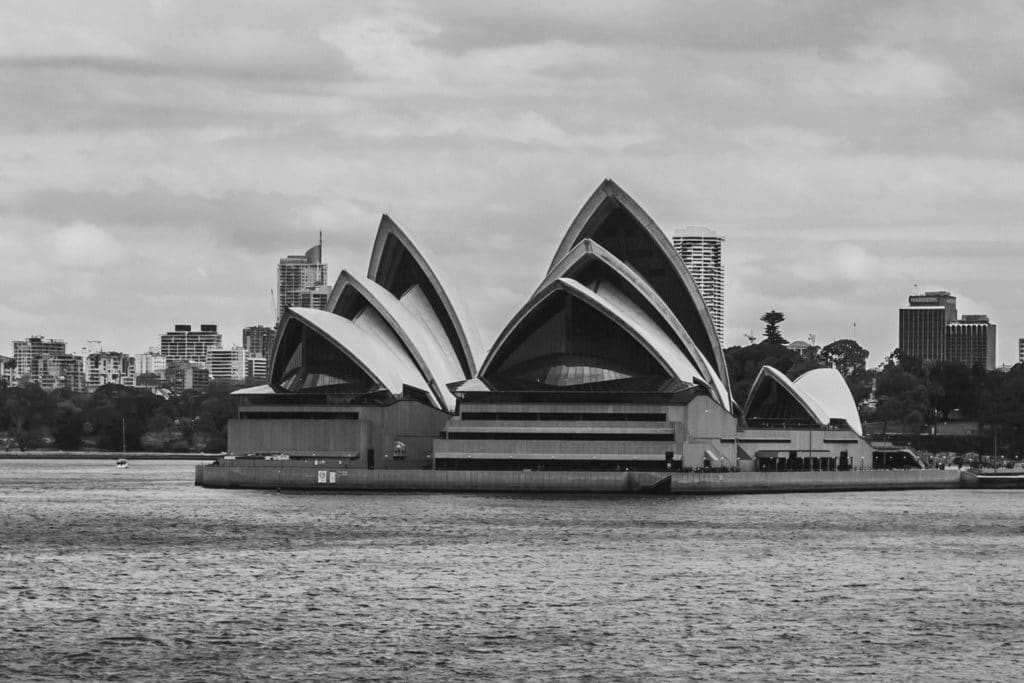
Maritimo principal designer Tom Barry-Cotter climbed up to the vessel’s foredeck and leaned against the 3-foot-tall bow rails. The captain turned the boat ever so slightly, and Barry-Cotter, off-balance momentarily, called back to us in the cockpit with a nervous laugh: “Don’t want to fall in there, mate. Where there’s seals, you know what else there is.”
We scanned the water for any monstrous shadows lurking below the surface. This was Australia, after all.
The many mansions lining the harbor as we cruised closer to downtown Sydney could make for a premium architectural tour. The multimillion-dollar dwellings range from modern to Mediterranean, all with expansive ocean views. There is a theory that water views are so sought after because human beings are wired to associate water with a continual food source, creating a calming effect on the psyche. That may or may not be true, but either way, Maritimo designed the X50 to have the same effect. That calming sensation of being near the water is especially found in the X50’s optional beach club, which is a noteworthy feature on a yacht that’s 52 feet, 7 inches length overall. The space can be arranged in a few ways, including as a third stateroom; this hull had two director’s chairs facing aft at a leather-embossed desk, creating a unique way to pound out those last few hours of work (had the yacht been on the hook). Forward in the beach club, a flat-screen TV was above a sink, counter and wine chiller, for when the work was done. A head to port lent the beach club a bit more autonomy, while the hydraulic swim platform was three steps up, allowing for an easy dip.
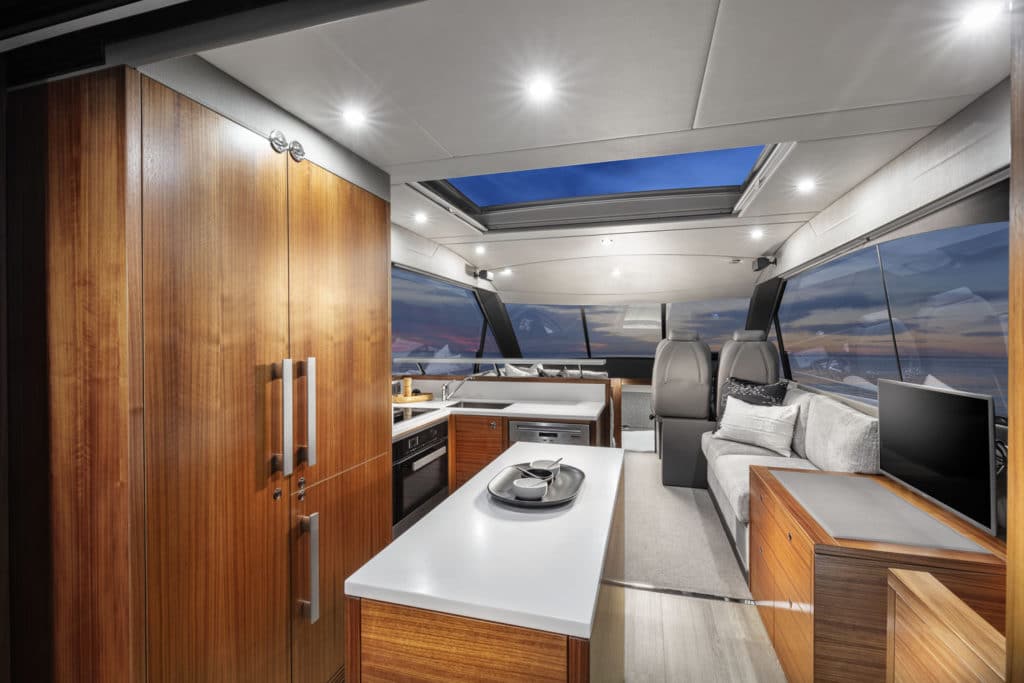
Inside, the U-shaped dining settee in the salon also offered excellent water views thanks to windows built low enough to see out of while I was sitting. Aft, the galley had a bounty of locally caught prawns and oysters sitting on ice, with prep room at the island counter, and sandwiches in the 6-foot-tall refrigerator. We tucked into a beachside cove for lunch. The scene was perfection, with bright and clean skies, a soft breeze, and children and dogs frolicking on the sand.
But then, just as we were about to moor, an ugly kur-dur-dur-dur-dur-grunk came from below. One of the yacht’s props caught a stray mooring that had some sort of metal sheathing.
Our intrepid captain stripped down to his skivvies and, after a deep breath to psych himself up, plopped overboard to untangle us—sharks and cold water be damned.
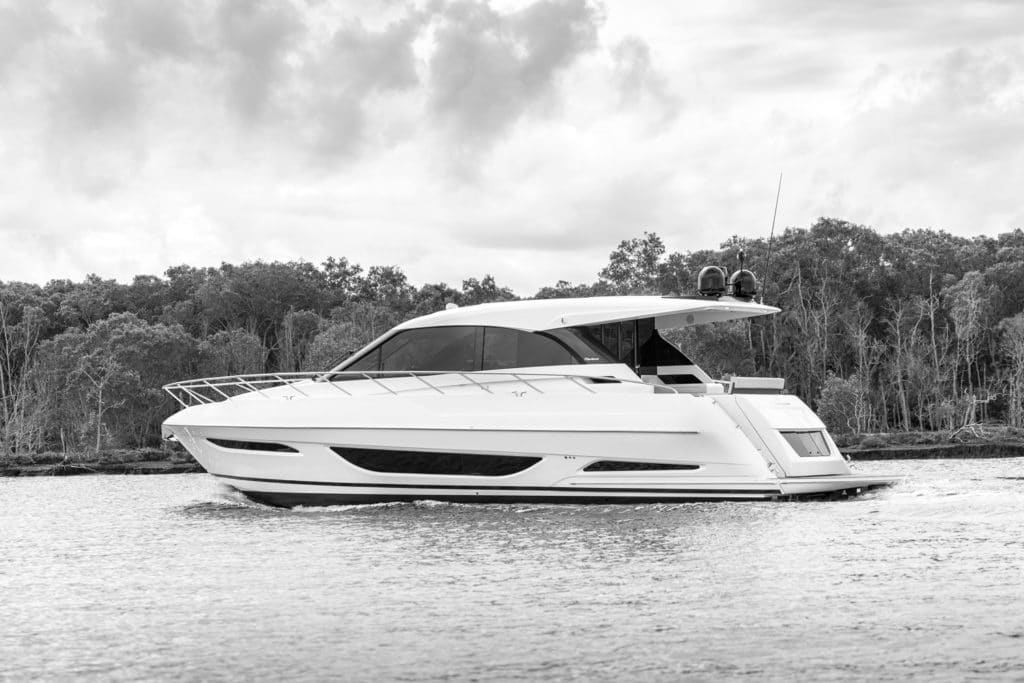
It says a lot about the Maritimo X50’s seaworthiness that we were soon back on our way, headed outside into open water, still pointed south toward downtown Sydney. The seas were rather rough, with high winds lopping the tops off 6-foot rollers. I took the helm, and at 19 knots, the yacht’s hand-laid, vinylester-resin hull felt solid. It was quiet as she dropped into the troughs time and again. Grooves to either side of her windshield aided in whisking water away if it came up over the bow, keeping the sightlines excellent. We passed a kayaker, a man perhaps 20 years old, all by himself, churning his paddle like a windmill over the blue-gray humps of ocean—another testament to the intrepid Aussie spirit, I suppose.
After about a half-hour, we reached the towering headlands that stand like sentries on either side of the entrance to Sydney Harbour. The seas smoothed out as the waterway revealed itself, bustling with ferries, tugboats and recreational craft. As we turned a final bend, the sun dipped low and light glittered off the greasy-smooth harbor’s surface. The Opera House and the Sydney Harbour Bridge, landmarks adjacent to each other, came into view.
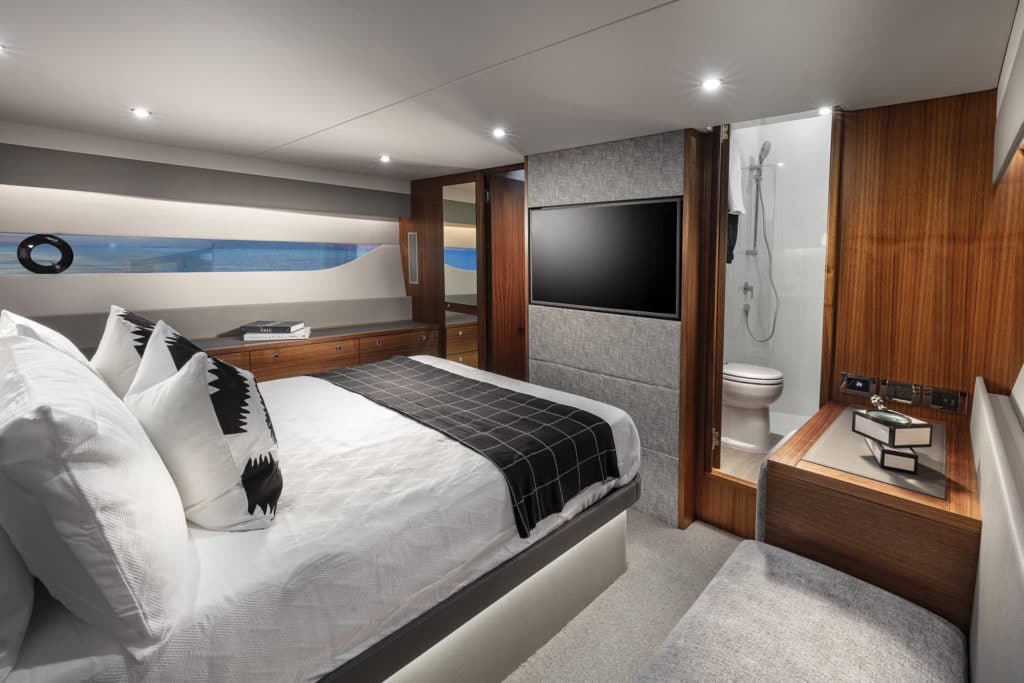
The captain slowed the boat to a crawl off Fort Denison, which served as a notorious prison in its past. In 1796, a British convict named Francis Morgan was hanged there for a murder. Up on the gallows, Morgan was asked for any final words. He reportedly responded that the only thing worth mentioning was the superb view of the harbor from the high elevation and he was sure there were no waters the world over to compare with it for beauty.
While there was no doubt a laundry list of terrible decisions and acts that led Morgan to end up on those gallows, he certainly had keen powers of observation.
Take the next step: maritimo.com.au









